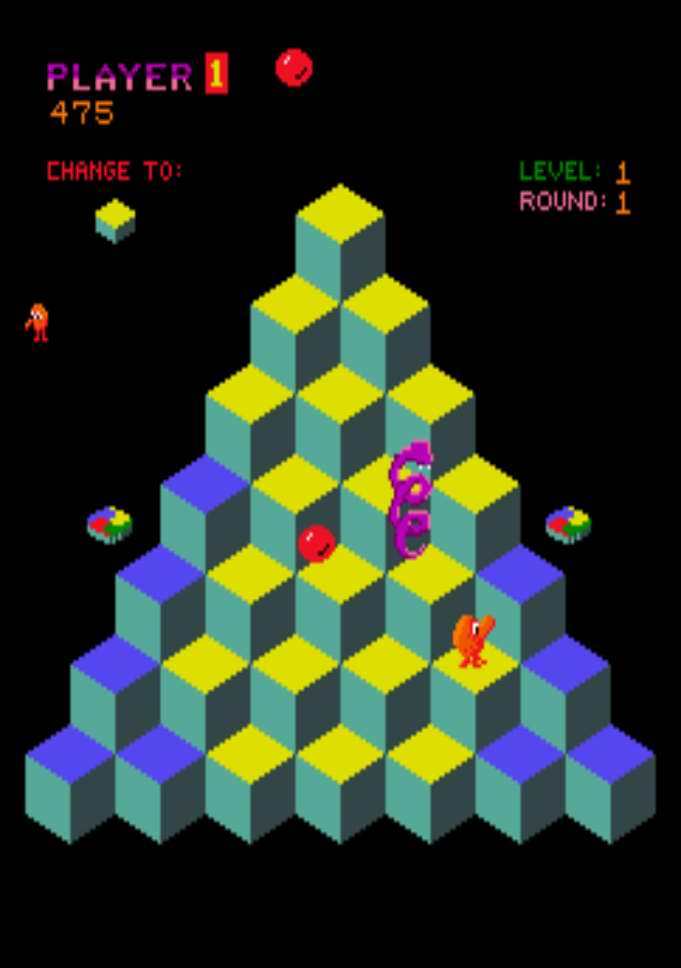Q*Bert
Qurious.
Gottlieb certainly weren't prolific videogame developers. In fact, it could easily be argued it was a one hit wonder: but what a hit! Q*Bert put his developer firmly on the videogame map for all eternity to see, and although his antics would only really be expanded by way of home system conversions, his well-earned renown places him in the same pantheon as Pac-Man, Donkey Kong and... Horace (on account of them both looking so weird).
It would have been easy for greenhorn Gottlieb to simplify the production of Q*Bert and reduce their programming workload. The concept is blindingly simple, yet the extravagance of the game's visual (and, considering it was 1982, audio) design camouflaged the minimalism of distinctly austere gameplay. Of course, that's not to say simplistic gameplay is a bad thing, but Gottlieb evidently understood that it doesn't hurt to make even the most uncomplicated games look great.
The most significant aspect of this overly-conscientious design has to be Q*Bert himself. An eponymous, surreal, modernistic character, our horn-nosed hero leaps from square to square on the isometric, pyramidal playing field changing the colour of the block he lands on. Change the colour of the entire map, and it's onto the next level. Avoiding a host of equally unusual enemies as they patrol the pyramid (although the triangular shape of the map quickly changes to any number of cube-based architectures) and trying not to hop over the edge into oblivion are 'Bert's only worries.

Highly addictive and surprisingly action packed, this could have been a simple "chessboard" and "counters" style game, but the simple fact that Gottlieb went a few extra miles and added several layers of high-polish sheen to Q*Bert earns it the right to stand proud (if slightly unadorned) on the pages of videogame history with its magnificently bizarre character by its side.
